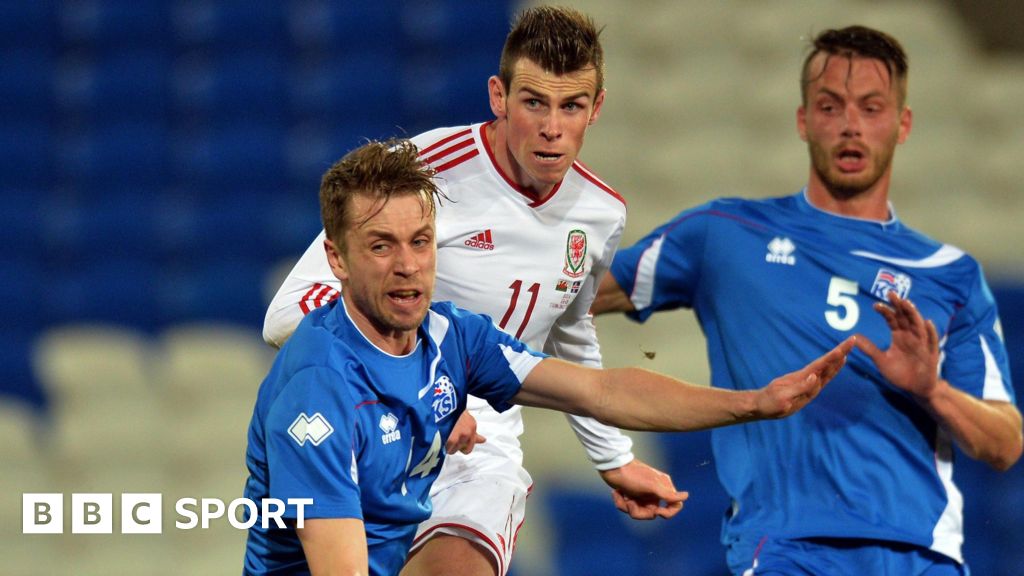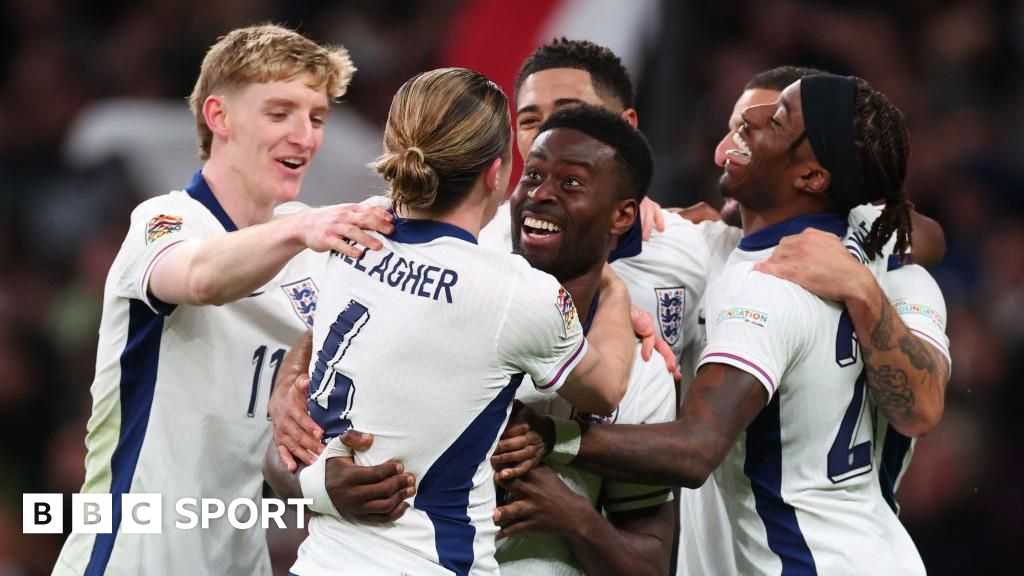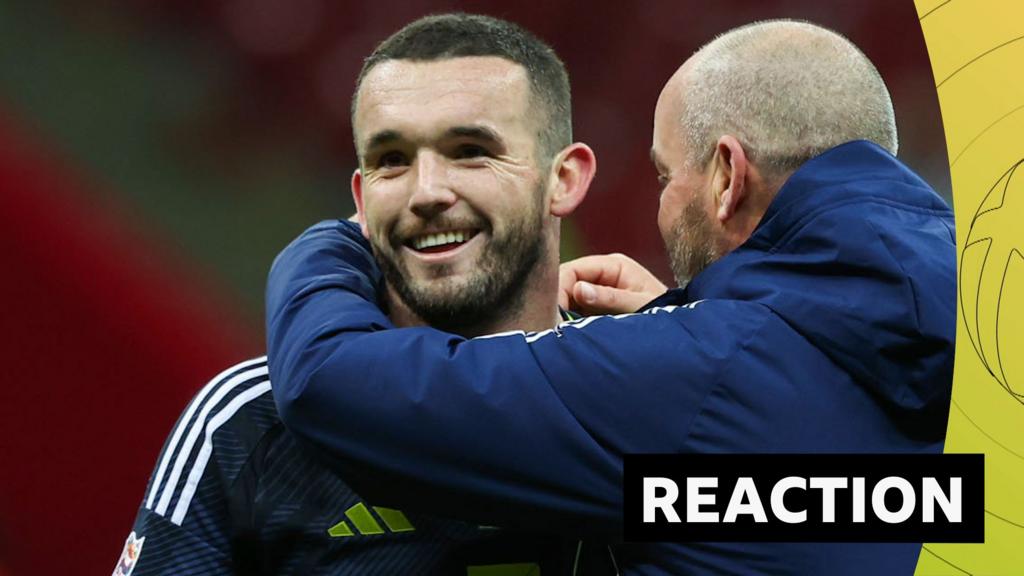ARTICLE AD BOX
Highlights: Scotland knocked out as Csoboth scores late Hungary winner
Scott Mullen
BBC Scotland in Germany
What if it's not Steve Clarke's fault?
What if Ryan Porteous being sent off, Kieran Tierney's hamstring going and a raft of pre-tournament injuries were not the reason for Scotland going home early at Euro 2024?
For years - 23 to be exact - the men's national team did not go to tournaments. Now they are there, the struggle to make an impact on that stage is real.
BBC Scotland looks at what the problems may be that are hampering Scotland flourishing.
Population size not an excuse?
So Scotland was the first team to pack bags and head off for the airport. Not a great feeling, is it?
But, it's a small country with the smallest pool of players, right? No big deal. Sadly, no.
Of the teams in Germany for this summer's championships, Slovenia, Albania, Georgia, Croatia all have a smaller population, with Slovakia's pretty much the same at 5.4m people.
At the time of writing, Slovakia are doing the best out of that group with three points.
Worryingly, even though some of those teams also sit on one point, Scotland are bottom of the pack with the worst goal difference.
Granted, none of the teams listed here look like tournament contenders, but should Scotland be doing better?
'Sorry for letting you down' - Andrew Robertson apologises to Scotland fan
From grassroots to the Euros
Too many kids are on their PlayStations. Pitches are locked up at weekends. Nobody tucks their tops into their shorts anymore.
There's a train of thought that one of the reasons Scotland failed for so long to get to big tournaments, and now actually flourish at them, was down to grassroots.
However, the stats say otherwise.
Earlier this year, the Scottish FA released figures saying a record 161,412 children were registered to play, the second year in a row a record high had been set.
In Scotland, this generally covers from playing fun fours from the start of primary school all the way up through, sevens, nines and then into 11-a-side football at secondary school. Other initiatives have also been run.
However, football may still be too expensive for some.
Figures released in March by the Scottish government show 26% of children in Scotland are living in relative poverty in the year previous.
While some free initiatives - such as North Lanarkshire Council's Club 365 programme in conjunction with Motherwell FC Community Trust - offer kids a chance to kick a ball, the opportunity to play and get quality training may well be beyond many.
So how do you get kids from kicking a ball at a weekend to being on an elite pathway?
'Why's it not given?' - Clarke questions penalty incident
Are performance schools working?
Since 2012, the SFA have had performance schools throughouth the country where the nation's best young talent can go and develop.
These are seven normal schools, where the chance to practice every day and receive extra coaching is geared to bring them on.
Of the Scotland team in Germany this summer, Billy Gilmour was the only performance school graduate, having attended Grange Academy in Kilmarnock.
In fact, since it started, Gilmour, Nathan Patterson and Calvin Ramsay are the only three to make it to a full senior cap. Max Johnston has also had a call-up.
It's not a roaringly large figure, but it's worth noting the first cohort are now only hitting the age of 24, so immediate success was never guaranteed.
However, there's proof to show the system may be offering hope to come.
A total of 39 graduates of the schools have made it into the Scotland Under-21 set-up. Of the most recent squad, six included former performance school pupils.
As well as the SFA, some Scottish clubs also have their own school partnerships, including Celtic, Dundee, Dundee United, Hearts and Rangers.
For example, Celtic's partnership with St Ninian's in Kirkintilloch can include Kieran Tierney, Anthony Ralston, Aaron Hickey, Jack Hendry and Ben Doak as their alumni.
Lack of opportunity at club level?
Do we also have an issue with players getting an opportunity to play at a high level domestically?
In Scotland, the Scottish Premiership is a ferrociously competitive environment. While only two teams ever look likely winning the thing, battles for Europe, squeeking into the top six, avoiding the relegation play-off or even the drop offer little margin for error.
Is this the right environment to blood young players where they are given time to learn from their mistakes?
Of the players to start in the Scottish Cup final in May between Celtic and Rangers, only three of them were Scottish - Celtic's Greg Taylor, Callum McGregor and James Forrest.
All three came to Germany, but only McGregor was trusted to play.
According to FBRef.com, external, 59 different nationalities were represented in the Scottish top flight last season.
Scotland had the most players (159) with 151,168 minutes between them, but England account for 76 players with 93,294.
That means the average playing time for an English player was 1227 minutes, compared to 950 minutes for a Scot.
The Scottish Premiership is also an ageing league, with the average age sitting at 27 reports Football Observatory, external.
That's the 16th-lowest tally of the nations represented at Euro 2024.
Speaking last year, Livingston manager David Martindale said: "There's a lot of pressure on managers to get instant results and success.
"That's going to hamper the development and progression of younger players."
For a country that sends so few players oversees to play, it's a worrying trend.
Tierney (Spain), Josh Doig and Lewis Ferguson (Italy), Scott McKenna (Denmark), Hendry (Saudi Arabia), Johnston (Austria) and Lewis Morgan (United States) are the most high-profile players who have been abroad in the past year.
Whatever the reason(s), while Scotland may be overall better off in 2024 having qualified for two of the past three major tournaments than five years ago, it would appear there is work to be done to take the national team to the next step.

 4 months ago
17
4 months ago
17








 English (US)
English (US)